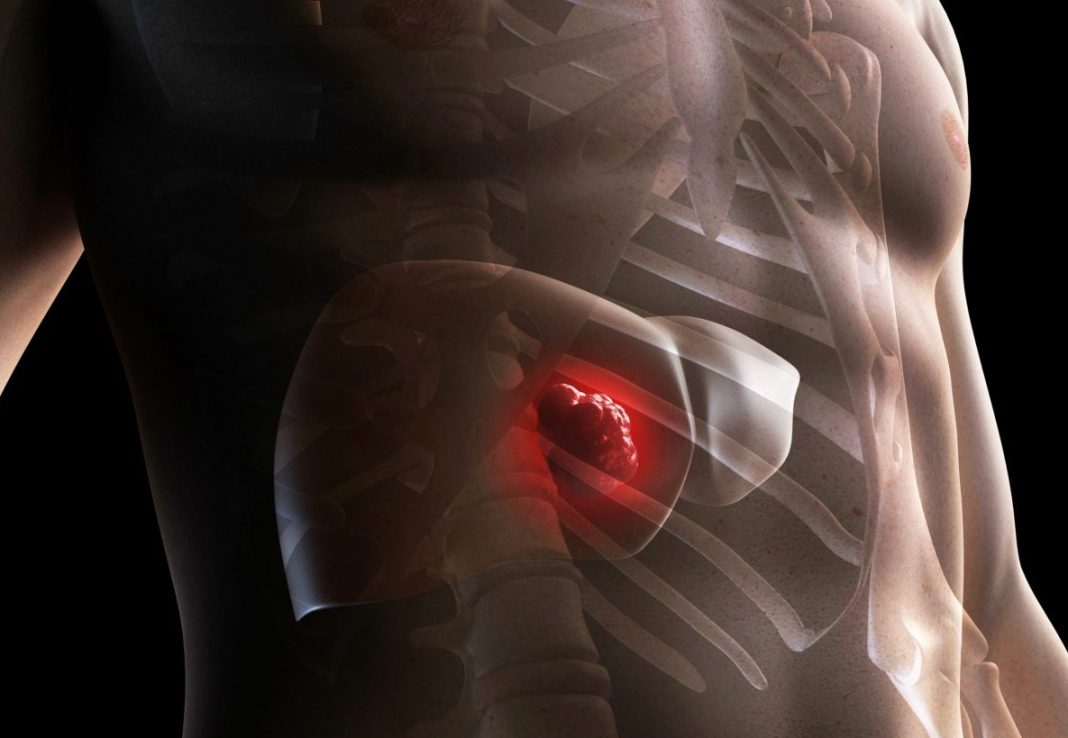Researchers at the Karolinska Institutet say they have identified the presence of a specific connection between a protein and an lncRNA molecule in liver cancer. By increasing the presence of the lncRNA molecule, the fat depots of the tumor cell decrease, which causes the division of tumor cells to cease, and they eventually die.
The study (“The CCT3-LINC00326 axis regulates hepatocarcinogenic lipid metabolism“) published in Gut, contributes to increased knowledge that can add to a better diagnosis and future cancer treatments, according to the scientists.
“To better comprehend transcriptional phenotypes of cancer cells, we globally characterized RNA-binding proteins (RBPs) to identify altered RNAs, including long noncoding RNAs (lncRNAs),” the investigators wrote.
“To unravel RBP-lncRNA interactions in cancer, we curated a list of ~2,300 highly expressed RBPs in human cells, tested effects of RBPs and lncRNAs on patient survival in multiple cohorts, altered expression levels, and integrated various sequencing, molecular, and cell-based data.
“High expression of RBPs negatively affected patient survival in 21 cancer types, especially hepatocellular carcinoma (HCC). After knockdown of the top 10 upregulated RBPs and subsequent transcriptome analysis, we identified 88 differentially expressed lncRNAs, including 34 novel transcripts. CRISPRa-mediated overexpression of four lncRNAs had major effects on the HCC cell phenotype and transcriptome. Further investigation of four RBP-lncRNA pairs revealed involvement in distinct regulatory processes.
“The most noticeable RBP-lncRNA connection affected lipid metabolism, whereby the non-canonical RBP CCT3 regulated LINC00326 in a chaperonin-independent manner. Perturbation of the CCT3-LINC00326 regulatory network led to decreased lipid accumulation and increased lipid degradation in cellulo as well as diminished tumor growth in vivo.
“We revealed that RBP gene expression is perturbed in HCC and identified that RBPs exerted additional functions beyond their tasks under normal physiological conditions, which can be stimulated or intensified via lncRNAs and affected tumor growth.”
“With the help of tissue material donated by patients with liver cancer, we have been able to map both the coding and noncoding part of our genome to identify which RNA-binding proteins have a high presence in liver cancer cells,” said the study’s senior author, Claudia Kutter, PhD, researcher at the department of microbiology, tumor, and cell biology, Karolinska Institutet. “We found that many of these proteins interacted with a long type of noncoding RNA molecules, so-called lncRNA.”
The research team conducted a more detailed study of a specific pairing of an RNA-binding protein (CCT3) and an lncRNA molecule (LINC00326). Using advanced CRISPR technology, they were able to both reduce and increase the amount of the protein and the lncRNA to see how it affected the cancer cells. When the lncRNA was increased, the fat depots of the tumor cell decreased, cell division ceased, and many of the cancer cells died. Following the laboratory studies, the results were also verified in vivo.
The researchers’ discovery provides an insight into the interaction between RNA-binding proteins and lncRNA molecules and contributes to a better scientific understanding of their role in tumors.
”The activities of the CCT3-LINC00326 pair can already be used in liver cancer diagnosis and prognosis,” said the study’s first author Jonas Nørskov Søndergaard, PhD, a researcher in Kutter’s research group. “However, the knowledge of this particular pairing is just the beginning and there are many more combinations of RNA-binding proteins and lncRNA molecules that we will further investigate. In the long run, these findings can help to contribute to new and effective treatments such as RNA-based treatments that target only the diseased cells, with the possibility of reducing side effects.”


